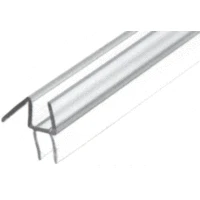Jute Rope Preparation
The Preparation of Jute Rope A Comprehensive Guide
Jute rope is a natural and environmentally friendly product made from the fibers of the jute plant, which is primarily grown in tropical regions. Known for its strength, durability, and biodegradability, jute rope has numerous applications, ranging from agricultural uses to handicrafts and construction. This article outlines the detailed preparation process of jute rope, highlighting key steps that ensure quality and sustainability.
Harvesting Jute
The preparation of jute rope begins with the harvesting of the jute plant, generally done during the monsoon season when the fibers reach their maximum length and strength. Farmers cut the plants close to the base and then bundle them together, allowing them to soak in water for several days. This soaking process, called retting, facilitates the separation of the fibers from the stem.
Retting Process
Retting is a crucial step in jute rope preparation. It helps to soften the stem and dissolve the pectin that binds the fibers together. Traditionally, this is done in shallow ponds or rivers where the bundles are submerged. Microorganisms and enzymes work to break down the material, allowing the fibers to be easily separated from the woody stem. Depending on weather conditions and water quality, retting can take anywhere from a few days to two weeks.
Fiber Extraction
Once retting is complete, the next step is fiber extraction. Farmers wash the jute bundles thoroughly to remove any remaining pectin and dirt. After washing, the fibrous part of the jute is separated from the stem using manual labor or mechanical processes. This is a labor-intensive task that requires skill to ensure that the long, strong fibers are preserved, as shorter or damaged fibers can affect the quality of the final rope.
Drying and Grading
jute rope preparation

After extraction, the jute fibers must be dried to prevent mold and decay. They are spread out under the sun, which not only dries them but also helps to enhance the color and quality of the fibers. Once dried, the fibers are graded based on length, color, and strength. Higher quality fibers yield a stronger rope, essential for durability in various applications.
Spinning the Fiber
Spinning is the next pivotal step in jute rope preparation. The graded fibers are twisted together to form a yarn. This can be done using handlooms or mechanical spinning machines, depending on the scale of production. The spinning process not only intertwines the fibers but also enhances their tensile strength, making them suitable for rope-making.
Rope Making
Once the jute yarn is prepared, it is wound together to form jute rope. The traditional method involves hand-twisting multiple strands together, while modern techniques may use machines for increased efficiency and consistency. The thickness and length of the rope can be customized based on specific requirements, ensuring versatility in its applications.
Final Touches
After the rope is made, it undergoes quality checks to ensure it meets industry standards. Often, the final product is treated with natural oils or coatings to enhance its resistance to water and decay, further extending its usability.
Conclusion
The preparation of jute rope is a meticulous process that combines traditional practices and modern techniques. With growing awareness about sustainability and eco-friendliness, jute rope continues to be a popular choice for various applications, promoting both environmental conservation and economic growth in jute-growing regions.
Share
-
The Best Lubricants for Aluminum Roller GuidesNewsJul.23,2025
-
Slitting Machine Applications in the Packaging IndustryNewsJul.23,2025
-
Rolling Roller Balancing Techniques for Smooth OperationNewsJul.23,2025
-
How To Optimize An EV Battery Assembly LineNewsJul.23,2025
-
Energy Efficiency in Modern Battery Formation EquipmentNewsJul.23,2025
-
Automation Trends in Pouch Cell Assembly EquipmentNewsJul.23,2025







